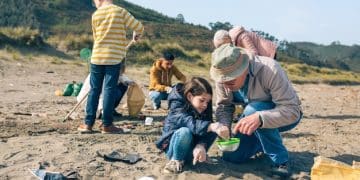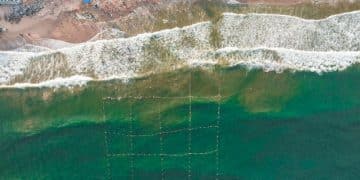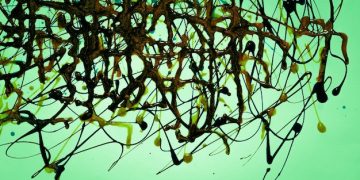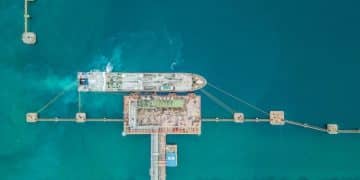US Offshore Wind: Benefits & Risks for Marine Life
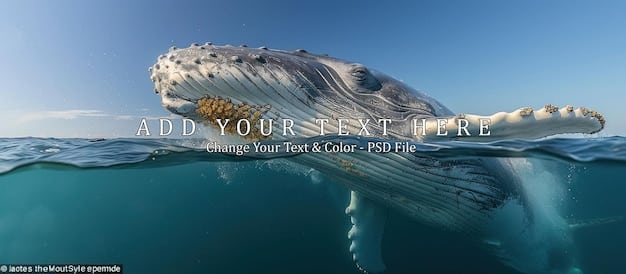
Offshore wind energy development in the US presents a complex duality for marine life, offering potential benefits through climate change mitigation while posing risks from construction, operation, and electromagnetic fields, demanding careful mitigation strategies.
The pursuit of renewable energy is a global imperative, and offshore wind power has emerged as a promising solution, particularly for nations with extensive coastlines. In the United States, the drive towards a clean energy future has significantly amplified interest in developing offshore wind farms. However, such large-scale industrial endeavors in dynamic marine ecosystems inevitably raise crucial questions about their environmental implications. This article delves into What are the Potential Benefits and Risks of Offshore Wind Energy Development for Marine Life in the US?, providing a nuanced perspective on this evolving energy landscape.
Understanding the Offshore Wind Energy Landscape in the US
The US has embarked on an ambitious journey to significantly expand its offshore wind capacity, recognizing its vast potential to generate clean electricity, reduce carbon emissions, and create jobs. This push is driven by federal incentives, state-level renewable energy mandates, and a growing consensus on the urgency of climate action. Currently, the US offshore wind industry is still in its nascent stages compared to European counterparts, but it is rapidly gaining momentum with several large-scale projects planned for development along the Atlantic and Pacific coasts.
The development process typically involves several phases, each with its own set of potential interactions with marine ecosystems. From site assessment and surveys to construction, operation, and eventual decommissioning, every stage requires careful planning and execution to minimize environmental footprint. The types of turbines, foundation designs (e.g., monopiles, jacket foundations, floating platforms), and transmission cable routes all play a critical role in determining the nature and extent of these interactions.
Driving Forces and Project Scale
The federal government, through the Bureau of Ocean Energy Management (BOEM), has been instrumental in leasing vast tracts of the Outer Continental Shelf for wind energy development. States like New York, New Jersey, Massachusetts, and Maryland have set aggressive targets for offshore wind procurement, signaling a clear commitment to this energy source. These projects are not small-scale; they involve hundreds of large turbines, each generating significant power, connected by extensive subsea cable arrays that bring electricity ashore.
The scale of these projects means that they occupy substantial marine areas, transforming previously open ocean environments into industrial zones. This physical presence alone necessitates a thorough understanding of the existing marine life within these zones and the potential for cumulative impacts across multiple projects. The long operational lifespan of these facilities, often 20-30 years or more, also means that any environmental impacts could be long-term, requiring continuous monitoring and adaptive management.
Technological Advancements and Future Outlook
Advancements in turbine technology have led to larger, more efficient turbines that can capture more wind energy. Future developments are likely to include floating offshore wind platforms, which can be deployed in deeper waters further from shore, potentially reducing visual impacts and opening up new development areas. While these advancements offer promising increases in renewable energy output, they also introduce new considerations for marine life, particularly if they are to be sited in areas previously inaccessible to conventional bottom-fixed turbines. As the industry matures, so too will our understanding of its ecological footprint, necessitating a dynamic and responsive approach to environmental stewardship.
Potential Benefits for Marine Life: A Broader Ecological Perspective
While the direct impacts of offshore wind development on marine life are a primary concern, it is crucial to consider the broader ecological benefits that this transition to renewable energy can offer. The most significant benefit stems from the role of offshore wind in mitigating climate change, a phenomenon widely recognized as the single greatest threat to marine ecosystems globally.
Climate Change Mitigation and Ocean Health
By replacing fossil fuel-based electricity generation, offshore wind farms reduce greenhouse gas emissions, particularly carbon dioxide. These emissions are a major driver of ocean acidification, where increased CO2 absorption by the oceans leads to a reduction in pH. Ocean acidification directly impacts shellfish, corals, and plankton, which form the base of marine food webs, by making it harder for them to build and maintain their shells and skeletons. A reduction in CO2 emissions indirectly safeguards these foundational species and, by extension, the entire marine ecosystem.
Beyond acidification, climate change also leads to rising sea temperatures, sea-level rise, altered ocean currents, and increased frequency and intensity of extreme weather events. These climate impacts disrupt marine habitats, alter species distributions, and stress physiological processes in marine organisms. Offshore wind’s contribution to decarbonization helps to slow these dangerous trends, providing a critical long-term benefit for marine biodiversity and ecosystem resilience.
“Reef Effect” and Habitat Creation
The physical structures of offshore wind turbines, particularly their foundations and scour protection, can act as artificial reefs. In some instances, these structures have been observed to attract and support new communities of marine organisms, offering hard substrates for colonization by sessile invertebrates like mussels, barnacles, and anemones, which in turn attract fish and other mobile species. This phenomenon, often termed the “reef effect,” can potentially enhance local biodiversity and provide new foraging grounds and refugia for certain species.
* Increased Biodiversity: The introduction of new hard substrate can create complex habitats that may not naturally exist in soft-bottom environments.
* Fish Aggregation: Structures often act as fish aggregating devices (FADs), attracting various fish species and potentially increasing local fish biomass.
* Shelter and Foraging: The structures can provide shelter from predators and strong currents, and surfaces for foraging, benefiting a range of marine organisms.
However, it is important to note that the “reef effect” is not universally beneficial and can have complex ecological consequences, such as attracting invasive species or altering natural migratory patterns. The context of the specific ecosystem and the design of the turbine foundations are critical factors in determining the net ecological outcome.
Potential for Reduced Shipping and Fishing Impacts (Indirect)
In some cases, the establishment of large offshore wind farms can lead to restricted access for certain types of fishing or shipping activities within the array area. While this can displace traditional users, it may also inadvertently create “no-take” zones or areas of reduced anthropogenic disturbance within the wind farm boundaries. Such areas could potentially act as marine protected areas, allowing depleted fish stocks to recover or sensitive habitats to regenerate, indirectly benefiting marine life in the long term. This is a complex area with trade-offs, but it represents a potential, albeit indirect, benefit.
Risks During Construction: Noise, Habitat Disturbance, and Collision
The construction phase of offshore wind farms presents significant immediate risks to marine life, primarily stemming from loud underwater noise, physical habitat disturbance, and the potential for collisions during vessel traffic. These impacts can be widespread and severe if not properly managed.
Underwater Noise Pollution
Pile driving, the most common method for installing foundations for monopile turbines, generates intense underwater noise that can propagate for many kilometers. Marine mammals, such as whales and dolphins, are particularly vulnerable to noise disturbance as they rely on sound for communication, navigation, foraging, and predator avoidance. High levels of noise can cause:
* Behavioral Changes: Animals may alter their migration routes, feeding patterns, or breeding behaviors to avoid noisy areas.
* Auditory Injury: Permanent or temporary hearing loss (PTS or TTS) can occur, impairing an animal’s ability to navigate and find food.
* Masking: Noise can obscure important natural sounds, interfering with communication and reducing an animal’s awareness of its surroundings.
Mitigation strategies, such as bubble curtains (which enclose the piling activity with a screen of bubbles to absorb sound), acoustic deterrent devices (ADDs), and ramp-up procedures (soft starts), are employed to reduce noise levels. However, their effectiveness varies depending on the species, location, and the specific technology used.
Habitat Disturbance and Release of Sediments
The physical presence of construction vessels, foundation installation, and cable laying directly disturbs seafloor habitats. This involves:
* Benthic Habitat Loss: The footprint of foundations and cables permanently removes or alters existing benthic (seafloor) communities, including sensitive habitats like seagrass beds or coral reefs.
* Sediment Plumes: Disturbance of the seabed releases sediment plumes into the water column. These plumes can reduce water clarity, smother benthic organisms, clog fish gills, and transport pollutants.
* Spawning Ground Disruption: Construction activities near critical spawning grounds can disrupt reproductive cycles and negatively impact fish populations.
Careful site selection, pre-construction surveys to identify sensitive habitats, and the use of directional drilling for cable shorelines can help minimize these impacts. Timing construction activities to avoid critical migratory or breeding seasons is also a key mitigation measure.
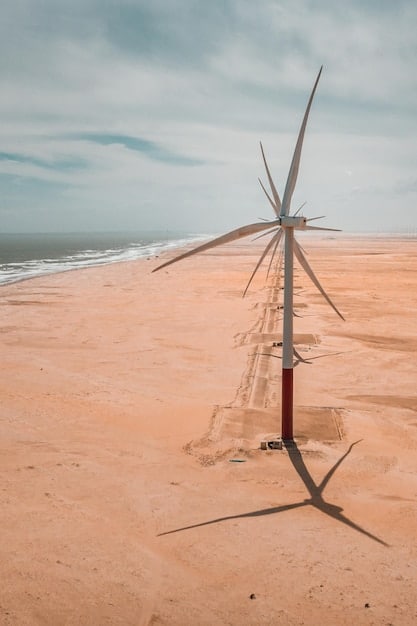
Vessel Traffic and Collision Risk
An increase in vessel traffic during construction, including barges, tugs, and crew transfer vessels, elevates the risk of collisions with marine mammals and sea turtles. Slow-moving, large vessels pose a particular threat to large whales.
* Increased Presence: More vessels in the area mean a higher probability of encountering marine animals.
* Speed Limitations: Enforcing vessel speed limits, especially in areas with known concentrations of marine mammals, is a crucial mitigation step.
* Protected Species Observers: Trained observers are often required on vessels to monitor for marine wildlife and halt operations if animals are sighted within a designated exclusion zone.
The cumulative impact of vessel traffic from multiple concurrent projects can further exacerbate this risk. Robust monitoring and adaptive management protocols are essential to track and reduce vessel interactions with marine fauna.
Operational Phase Risks: Continuous Presence and EMF
Once constructed, offshore wind farms transition into their operational phase, which introduces a new set of long-term risks to marine life. These risks are associated with the continuous physical presence of the structures, electromagnetic fields (EMF) from subsea cables, and the potential for operational noise or vibration.
Bird and Bat Collisions (Direct Impact on Avian Life)
While this article focuses on marine life, it’s important to briefly acknowledge the known risk of collisions for birds and bats with turbine blades. Migratory pathways are particularly vulnerable. Though not directly marine, some sea birds may be affected. Mitigation includes careful site selection away from major migration corridors and, in some cases, radar-activated curtailment systems that temporarily halt turbines during high-risk periods.
Electromagnetic Fields (EMF) from Subsea Cables
Subsea power cables connecting turbines to each other and to the shore generate electromagnetic fields. The long-term effects of chronic exposure to these fields on marine organisms are not yet fully understood, but research suggests potential impacts on:
* Electrosensitive Species: Sharks, rays, and other species that use Earth’s magnetic field for navigation or electrosense for foraging may be disoriented or attracted to cables, altering their behavior or migration patterns.
* Growth and Development: Some studies indicate potential subtle effects on the growth, development, or reproductive success of certain invertebrates and fish.
* Behavioral Changes: Animals might aggregate around cables or avoid areas with strong EMF, leading to localized changes in species distribution.
Research is ongoing to better understand these effects and to develop mitigation measures, such as burying cables deeper or using shielded cables, although deep burial can bring its own habitat disturbance challenges.
Underwater Noise and Vibration
While less intense than construction noise, operational turbines produce continuous low-frequency noise and vibration from rotating machinery and blade movement. The potential impacts on marine life include:
* Chronic Stress: Long-term exposure to even low levels of noise can lead to chronic stress, affecting an animal’s physiological processes and overall health.
* Masking: Continuous noise can interfere with the communication and foraging of marine mammals and fish.
* Behavioral Avoidance: Some species may avoid areas within the wind farm, effectively reducing available habitat.
The effects of operational noise are less clear than those from construction, and they often depend on the specific frequencies emitted, local ambient noise levels, and the sensitivity of the species present in the area. Further research and monitoring are needed to assess these long-term impacts.
Habitat Change and “Reef Effect” Complexities
As discussed, the physical presence of turbine foundations can create artificial reefs. While this can lead to localized increases in biodiversity, it also alters the natural habitat.
* Attraction of Non-Native Species: Artificial structures can provide a foothold for invasive species, which may outcompete native organisms.
* Altered Food Webs: The introduction of new species and the aggregation of others can change local food web dynamics, potentially impacting existing predator-prey relationships.
* Displacement of Existing Species: Mobile species that prefer open water or specific benthic habitats may be displaced by the physical structures.
The net ecological outcome depends on the specific ecosystem, the design of the wind farm, and the management practices in place to monitor and adapt to these changes.
Cumulative Impacts and Long-Term Considerations
The assessment of offshore wind energy development’s impact on marine life cannot be limited to individual projects in isolation. A critical aspect of environmental review is understanding the cumulative impacts resulting from multiple projects, both existing and planned, as well as interactions with other human activities in the marine environment.
Synergy of Multiple Projects
As more offshore wind farms are developed along the US coast, the spatially and temporally overlapping impacts from construction (e.g., pervasive noise), operation (e.g., continuous EMF exposure), and increased vessel traffic can collectively exert greater pressure on marine ecosystems than any single project. For instance, serial pile driving across a region during migrations could create significant acoustic barriers, or the combined footprint of several wind farms could alter large-scale oceanographic processes.
Understanding these cumulative effects requires:
* Regional Planning and Assessment: Moving beyond project-specific environmental impact assessments to conduct broader regional analyses that consider the combined effects of all planned developments.
* Standardized Monitoring: Implementing consistent monitoring protocols across projects to allow for the aggregation of data and a more comprehensive understanding of population-level impacts.
* Baseline Data Collection: Investing in robust pre-construction baseline studies to accurately measure changes over time.
Without a comprehensive understanding of cumulative impacts, there is a risk of underestimating the true ecological cost and hindering effective mitigation.
Long-Term Data Gaps and Adaptive Management
Given the relatively limited operational history of large-scale offshore wind farms in the US, there are significant data gaps regarding their long-term effects on marine populations and ecosystems. This uncertainty necessitates an adaptive management approach:
* Ongoing Research: Continuous investment in scientific research to address knowledge gaps, particularly concerning EMF effects, long-term operational noise, and the ecological consequences of habitat alteration.
* Feedback Loops: Establishing mechanisms to integrate monitoring data and research findings back into project planning and regulatory frameworks.
* Flexibility: Designing projects with the flexibility to implement new mitigation measures or modify operations based on evolving scientific understanding.
Adaptive management acknowledges that our understanding is incomplete and commits to learning from experience, allowing for adjustments to minimize unforeseen negative consequences and maximize potential benefits.
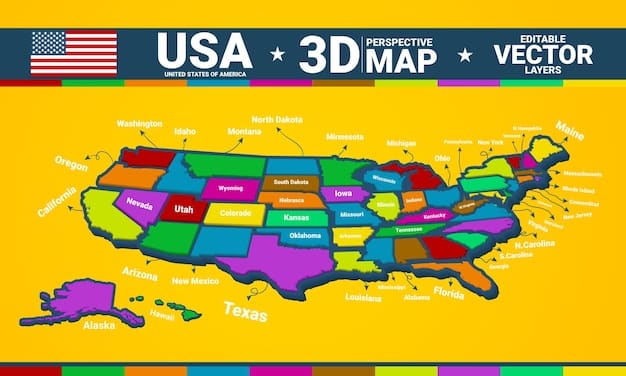
Interaction with Other Stressors
Offshore wind development occurs within a marine environment already stressed by climate change, established shipping lanes, fishing pressure, pollution, and coastal development. The impacts of offshore wind should be considered in this broader context. For example, a species already under pressure from climate-induced habitat loss might be more vulnerable to noise disturbance during migration. Conversely, reduced reliance on fossil fuels from wind energy could alleviate some of these other stressors in the long run. Integrated ocean management is essential to balance these various human activities and protect marine ecosystems effectively.
Mitigation Strategies and Best Practices
Effective mitigation strategies are paramount to minimizing the risks associated with offshore wind energy development for marine life. These strategies encompass a range of measures applied throughout the project lifecycle.
Planning and Site Selection
The most effective mitigation often begins at the earliest stages:
* Strategic Siting: Avoiding areas of high ecological sensitivity, such as critical habitats, important foraging grounds, breeding areas, and major migratory corridors. This requires extensive pre-construction surveys and robust environmental impact assessments.
* Minimizing Footprint: Designing projects to minimize the physical area occupied by turbines and cables.
* Cable Burial: Burying subsea cables to the maximum feasible depth to reduce EMF exposure and physical disturbance to the seabed.
Construction Phase Mitigations
To reduce impacts during the most disruptive phase:
* Noise Reduction Technologies: Employing noise dampening measures during pile driving, such as bubble curtains, acoustic screens, and hydro-sound dampers, to significantly reduce underwater noise levels.
* Marine Mammal Observers (MMOs): Stationing trained observers on construction vessels and at monitoring stations to detect marine mammals and enforce exclusion zones, halting operations if animals are too close.
* Ramp-Up Procedures (Soft Starts): Gradually increasing the intensity of noise-generating activities (like pile driving) to allow marine animals to move away from the source before peak noise levels are reached.
* Seasonal Restrictions: Timing construction activities to avoid periods when sensitive species are known to be present in high numbers (e.g., during breeding or migration seasons).
Operational Phase Mitigations
Managing long-term impacts:
* Monitoring and Adaptive Management: Implementing comprehensive long-term monitoring programs to track the effects of operational turbines and cables on marine life. This data then informs adaptive management strategies, allowing for adjustments to operations if unforeseen negative impacts are detected.
* Blade Detection and Curtailment: For avian concerns, although less direct for marine life, advanced radar systems can detect approaching birds/bats and temporarily shut down turbines to reduce collision risk.
* Foundation Design: Designing foundations that promote beneficial reef effects while minimizing risks, potentially by using materials or structures that are less attractive to invasive species.
Decommissioning Planning
While far in the future, planning for decommissioning impacts is part of a complete lifecycle assessment. Options include complete removal, partial removal, or leaving structures in place to continue their “reef effect,” each with its own benefits and risks that need to be evaluated based on ecological outcomes at that time.
* Integrated Monitoring: Holistic monitoring of multiple stressors (e.g., climate change impacts, overfishing) alongside offshore wind effects to understand cumulative pressures.
* Research and Development: Investing in R&D for quieter construction methods, more effective EMF shielding, and improved environmental impact assessment tools.
* Stakeholder Engagement: Engaging with fishers, environmental groups, and indigenous communities to gather local knowledge and incorporate their perspectives into planning and mitigation efforts.
These interwoven strategies aim to strike a balance between harnessing clean energy and safeguarding the delicate balance of marine ecosystems, reflecting a commitment to responsible and sustainable development.
| Key Aspect | Brief Description |
|---|---|
| 🌬️ Climate Mitigation | Reduces greenhouse gases, combating ocean acidification and warming. |
| 🏗️ Construction Noise | Pile driving generates intense underwater sound, impacting marine mammals. |
| 🔌 EMF Effects | Subsea cable electromagnetic fields could disorient electrosensitive species. |
| 🐠 Reef Creation | Turbine foundations can act as artificial reefs, increasing local biodiversity. |
Frequently Asked Questions About Offshore Wind and Marine Life
▼
Offshore wind farms can primarily affect marine mammals during construction through intense underwater noise from pile driving, which can cause behavioral changes, auditory injury, or masking of vital sounds. During operation, continuous low-frequency noise and electromagnetic fields from cables pose potential long-term risks, potentially altering navigation or foraging behaviors. Mitigation involves noise reduction, marine mammal observers, and strategic siting to protect these sensitive species.
▼
Yes, turbine construction can harm fish populations through habitat disturbance and sediment plumes that affect spawning grounds or fish gills. Electromagnetic fields from subsea cables might disorient electrosensitive fish species or alter their distribution. However, turbine foundations can also create artificial reefs, potentially increasing local fish biomass. Careful site selection and mitigation, like avoiding sensitive spawning seasons, are crucial to minimize negative impacts.
▼
The “reef effect” refers to offshore wind turbine foundations acting as artificial reefs, providing new hard substrate for colonization by sessile organisms like mussels and barnacles. This can attract various fish species, crabs, and other mobile marine life, potentially increasing local biodiversity and creating new foraging grounds and shelter from predators. It can enrich habitats, especially in otherwise soft-bottom environments that lack natural hard structures.
▼
Mitigation for electromagnetic fields (EMF) from subsea cables focuses on reducing exposure to marine life. Common strategies include burying cables as deep as technically feasible within the seabed, which provides a physical barrier and distance to dissipate the field. Additionally, using shielded cables designed to enclose and contain the electromagnetic field can significantly reduce its leakage into the surrounding water, minimizing potential impacts on electrosensitive species like sharks and rays.
▼
Climate change is arguably the most significant long-term threat to global marine ecosystems, causing ocean acidification, rising sea temperatures, sea-level rise, and altered currents. By generating clean electricity, offshore wind development directly reduces greenhouse gas emissions, thereby mitigating these overarching climatic impacts. This indirect, yet profound, benefit helps to preserve the fundamental health and stability of marine environments, safeguarding a vast array of species from large-scale, systemic threats posed by global warming.
Conclusion
The development of offshore wind energy in the US represents a critical step towards a sustainable energy future, offering substantial benefits in the fight against climate change, which is the paramount long-term threat to marine life. However, this transition is not without its complexities, particularly concerning the immediate and long-term impacts on marine ecosystems. From the acoustic trauma of construction to the ongoing presence of electromagnetic fields and physical structures, the risks are real and necessitate rigorous scientific assessment and proactive mitigation. A balanced approach, combining strategic planning, cutting-edge technology, and adaptive management, is essential to harness the immense potential of offshore wind while diligently safeguarding the vibrant and vulnerable marine life that shares our coastal waters. The future success of this industry will depend not only on technological prowess but also on our collective commitment to responsible stewardship of the oceans.
